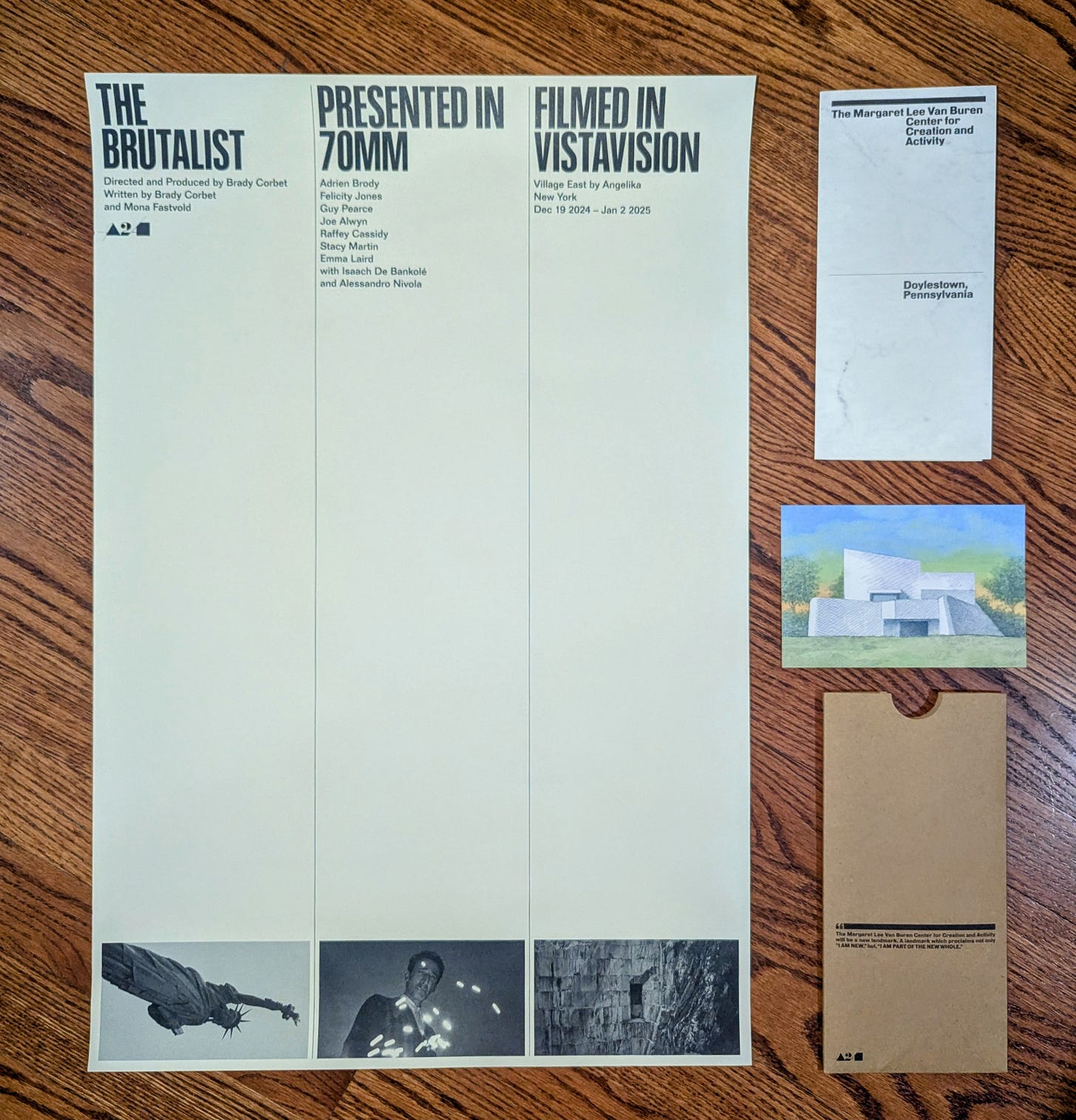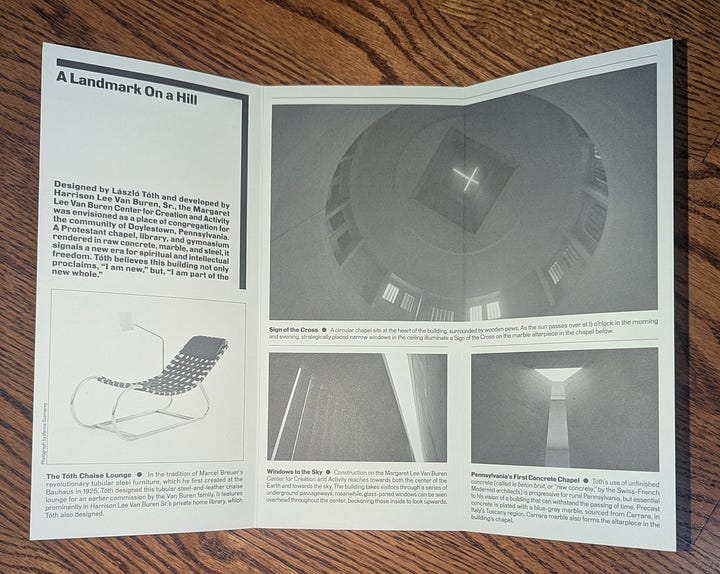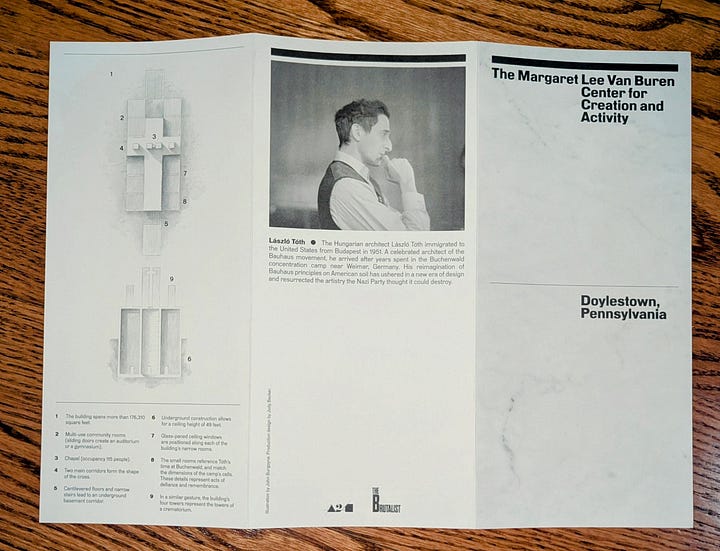Review of The Brutalist
A beautiful and brutal film with architecture as metaphor
The 3.5+ hour film The Brutalist—a likely Oscar-contender—was shot in only 33 days, and covers 33 years of the life of Laszlo Toth, a fictional Hungarian-born architect. The number 33 also happens to play a significant role in the major world religions of Judaism, Islam and Christianity. Is all of this numerology a cosmic accident, or is there more at play?
I found much of the film masterful, and Adrien Brody was brilliant as the concentration camp survivor Toth. I suggested we see it because Dan is a huge fan of brutalist architecture. And while the main character of the movie is an architect whose Bauhaus training is evident in his work; the film is more about the brutality of people, not buildings.

Toth comes to America in 1947, looking for a new life after the horror he experienced in a concentration camp. There are hints of his previous career as a well-known and respected architect, but when he is asked by the son of a millionaire to re-do his father’s library, we truly see Toth’s talent in his re-envisioning of the room. That millionaire, Harrison Lee Van Buren, an excellent Guy Pearce, eventually becomes Toth’s benefactor when he asks him to design and build a community center. Toth envisions the Margaret Lee Van Buren Center for Creation and Activity (to honor Harrison’s mother) as a massive cement structure that will include multi-use community rooms, a gymnasium, and a library. Eventually, the community demands and gets a Protestant chapel as well.


The center’s design is where we get to see brutalist architecture in all its precast concrete glory, but the sad existence of Toth was cast long before that. He survived the Holocaust only to descend into heroin addiction. He is finally reunited with his wife, but there are many strains on their marriage and his niece, who accompanies his wife to the U.S., has been rendered mute because of her experience in the camps. Van Buren and his son are rich drunks who take what they want from whomever they want. The wickedness of what Toth endures from casual but callous comments to being brutalized by people close to him will stay with you. Might haunt you.

Toth’s architecture is brutalist by definition, but the brutality of people is the real story here. Despite his brilliance and skillful attempt to use architecture to express his emotions, there is no joy in Toth’s life. He—and by extension we—cannot overcome the horrible meanness of what humans do to one another.
Perhaps that is why The Brutalist and the great religions of the world all share the number 33. It is an attempt to illuminate our shared humanity, but we cannot overlook the brutality that we so often impose on one another.
Shared divinity be damned.


Budapest has a stunning outdoor statuary park on the outskirts dedicated to brutalist sculpture not destroyed when the Soviets left. Happy to share photos if anyone is interested. https://www.mementopark.hu/
I did not realize the 33 meaning